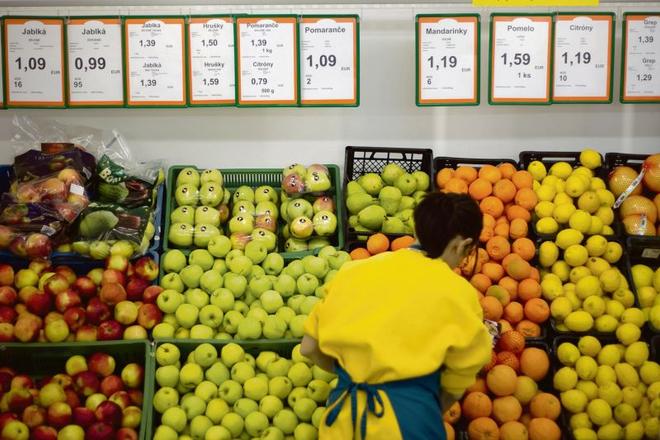Core inflation compares exclusively regulated prices and administrative measures in taxes, while net inflation also ignores development in food prices.
Compared to February, the March core inflation impacted the aggregate inflation with 0.14 percentage points (p.p.); while the regulated prices and indirect taxes have not impacted the aggregate inflation. The food prices impacted the core inflation by 0.03 p. p. and the net inflation impacted the core inflation by 0.11 p. p.
Consumer prices kept falling for the fourth consecutive month y-o-y, the SITA newswire added. In Q1, consumer prices fell by 0.4 percent y-o-y, but rose slightly month-on-month (0.1 percent for March, compared to February).
“The reasons for the March rise in prices, or rather decline of their y-o-y decline can be found in food prices and lower fuel prices,” UniCredit Bank macro-economic analyst Ľubomír Koršňák wrote. “The demand inflation remained relatively stable in March. Prices of market services – without imputed rental – and marketable goods – without fuels – remained unchanged in March, and compared to the same period of 2014, were also higher by 0.8 percent UniCredit Bank calculation), just like they were in February.”
Koršňák added that for the future, there is no greater engine of inflation; and this state should remain during most of this year. Inflation should oscillate around zero (or rather slightly below zero) for most of 2015. The acceleration of y-o-y growth of prices is expected only towards the end of this year, Koršňák concluded. Despite the mild decline in prices in Slovakia, it cannot be called harmful deflation that would lead to a deflationary spiral.
The March decline in prices was milder than in the beginning of 2015, Jana Glasová, Poštová Banka analyst, wrote. She joined Koršňák in the opinion that crude oil prices impacted the development most, including the fact that they have already started increasing on world markets – which again impacted Slovak prices. The continuing decline in food and non-alcoholic beverages’ prices can be ascribed to the regional crisis in Ukraine and EU sanctions against Russia.
The prices of goods and services in Slovakia will not grow this year either, Glasová concludes, adding that free train rides will push the prices in transport down until November when the effect of y-o-y price decline will fade away. The main factors impacting the inflation in Q2 will be the reviving economy, falling unemployment rate, growing salaries and free monetary policy of the European central bank.
The growth of revenues in industry in Slovakia gained momentum in February, increasing 8.3 percent; while in January it was o 2.4 percent, according to SITA. Revenues grew in mining, delivery of power, gas, steam and cold air; in industrial production; in water management and waste disposal. Month-on-month, the revenues of industrial businesses grew in February by 2.6 percent (mostly in production of vehicles; of metals and metal constructions; on PC and electronic products; and in electric facilities; while declining in chemicals). Also construction, transport and storage rose, while the revenues in the IT sector declined y-o-y but rose m-o-m.



 Fruit and vegetable prices went up the most in January 2019. (source: SME)
Fruit and vegetable prices went up the most in January 2019. (source: SME)